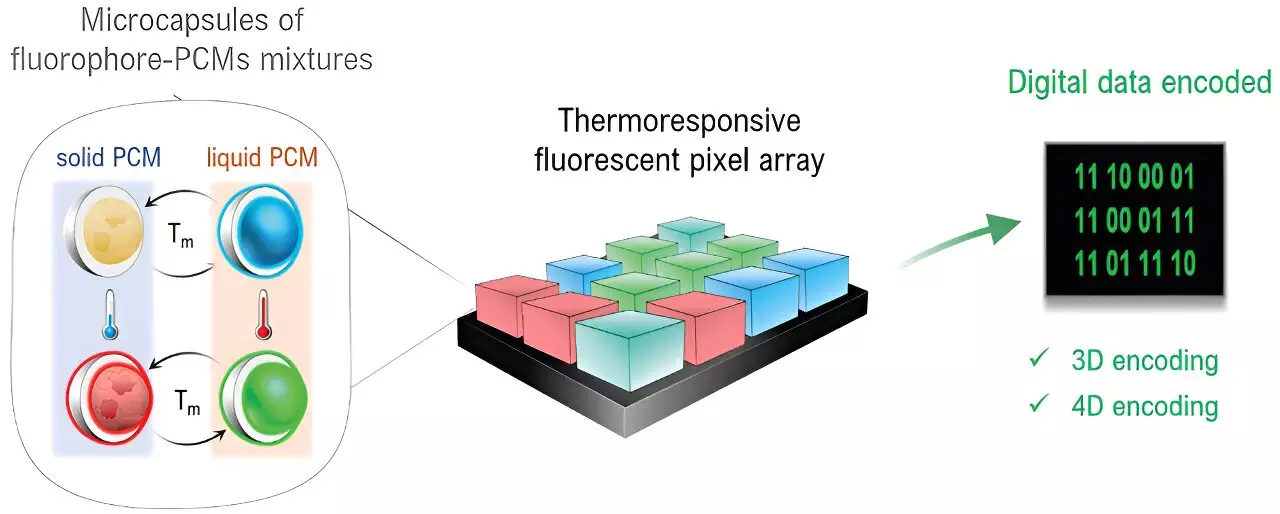In a striking advancement within the realm of digital technology, a consortium of researchers has unveiled a groundbreaking data encoding and storage system that harnesses the potential of microcapsules infused with luminescent dyes and phase-change materials. This innovative approach signifies a remarkable leap forward, potentially transforming the landscape of data security through enhanced encryption systems applicable across diverse sectors like cybersecurity and anti-counterfeiting measures.
The brilliant minds behind this project include Dr. Claudio Roscini, a senior researcher, and Prof. Daniel Ruiz-Molina, a leading scientist from the ICN2 Nanostructured Functional Materials Group. Their work benefited from collaboration with prominent researchers from the Autonomous University of Barcelona, including Prof. Jordi Hernando and Dr. Jaume Ramón Otaegui, culminating in the publication of their findings in the esteemed journal, Advanced Functional Materials.
How the System Works
The researchers’ methodology revolves around a pixel system designed using microcapsules that contain a carefully calibrated mix of fluorescent dyes and phase-change materials such as paraffins. These innovative materials are traditionally recognized for their unique thermal properties, specifically their ability to absorb and emit thermal energy when subjected to temperature fluctuations. This inherent feature was ingeniously repurposed by the researchers to formulate a system capable of digital data encoding.
Central to the operation of this sophisticated encoding system is the capacity of the pixels to adjust their emitted light in response to variations in voltage and temperature. This dynamic interaction enables the system to conduct two distinct types of data encoding operations: three-dimensional (3D) data encryption and four-dimensional (4D) data storage. The three dimensions consider the pixel’s spatial positioning (akin to QR codes) and their resultant colors, while the fourth dimension is uniquely dictated by the materials’ thermal responses.
Applications and Future Implications
The implications of this technological advancement are profound. The potential applications span several crucial sectors, with significant promise in anti-counterfeiting technologies and high-density data storage solutions. The uniqueness of using luminescent dyes combined with phase-change materials not only elevates the efficiency of data encoding but also introduces a cost-effective alternative to existing systems.
This new methodology, characterized by its multi-dimensional data encoding capability, provides a level of complexity that is ideally suited for developing sophisticated security applications. As society continues to grapple with issues surrounding data breaches and counterfeit goods, solutions such as this remain paramount in fortifying data integrity and security.
The work of Dr. Roscini, Prof. Ruiz-Molina, and their collaborators opens up exciting avenues for research and application, paving the way toward a future where data encoding remains both efficient and secure. As these technologies continue to evolve, they promise to redefine our interactions with digital data, safeguarding our information in ways that were previously unimaginable.


Leave a Reply